As in any great drama, there were big parts and small ones. Some—the astronauts certainly, and top managers like Wernher von Braun—achieved lasting fame. Most played roles so small or brief that few recall their names today. But without Ellie Foraker to sew their spacesuits, or Emil Schiesser to chart their course, or Lynn Radcliffe to test their spacecraft engines, the astronauts might never have reached the moon. And when it was over, all of them could take a bow, the stars as well as the stagehands, and know they had played their part. Here are some of the members of the Apollo cast.
“SimSup”
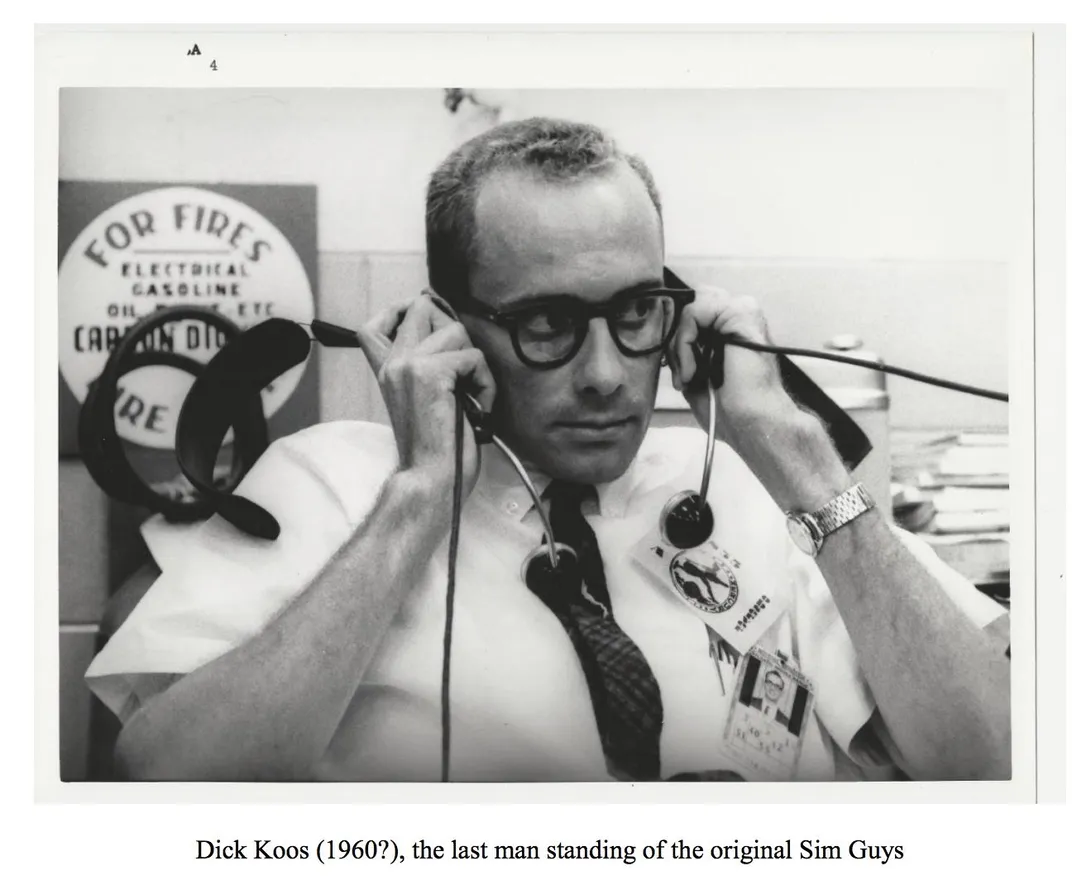
The trainers were there to help, of course. By putting astronauts and flight controllers through hundreds of hours of joint drills—with as many surprises thrown in as the trainers could dream up—the simulations gave teams the confidence and sharpness to handle real emergencies in flight. In practice, though, the drills became battles between the flight teams and the Simulation Supervisors. And, as “SimSup” Dick Koos told historian Tyler Peterson, “We were the guys with the black hats.” The sims were so grueling, according to Flight Director Gene Kranz, that “when we were through, we were in a place beyond exhaustion.”
Koos well understood that spaceflight was different from other kinds of piloting. Starting with Project Mercury, he and his colleagues had written the training procedures for a new enterprise where the pace of mission events outstripped even the quickest reaction times. Often the team’s decision came down to a split-second call: Abort or don’t abort?
Kranz thought Koos “a worthy adversary” in these battles and an excellent choice for training his Apollo 11 landing team. “Dick expressed himself in incomplete sentences, and seemed unsure of what he was trying to say,” he wrote. But his training sessions “were like a rapier, cutting so cleanly that you did not know you were bleeding until long after the thrust.”
Finisher
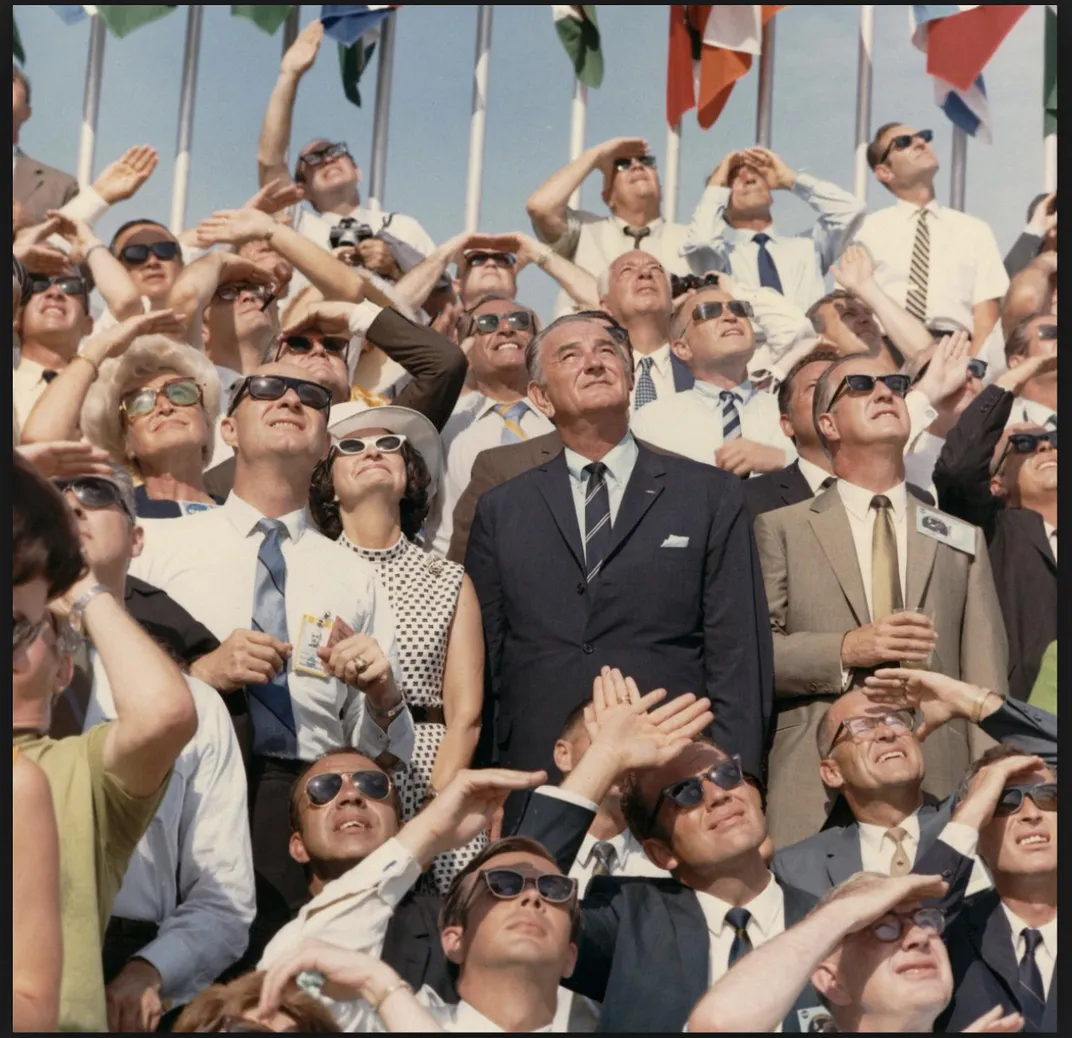
We think of Apollo as John F. Kennedy’s legacy, but it was Lyndon Johnson who saw it through, almost to the end. (He left the White House six months before Apollo 11, the only launch he ever saw in person.)
As Senate Majority Leader in 1957, Johnson had been instrumental in the creation of NASA, and his deep knowledge of space issues and legendary political clout—particularly with the Congressional committees that controlled space funding—helped keep the moon program on track. Later in his presidency, preoccupied with civil rights and the Great Society and bedeviled by the war in Vietnam, Johnson’s role in the space program became mostly ceremonial. He presided over Apollo’s lowest moment (he learned of the Apollo 1 fire at a White House reception just hours after signing the 1967 Outer Space Treaty) as well as one of its most sublime. On the day the Apollo 8 astronauts returned from humanity’s first lunar voyage, an ebullient Johnson phoned their wives to offer his congratulations. “When Sputnik came over the ranch many, many years ago,” he told them, “we had dreams of something like this, but we never thought it could be so perfect.”
Frogman
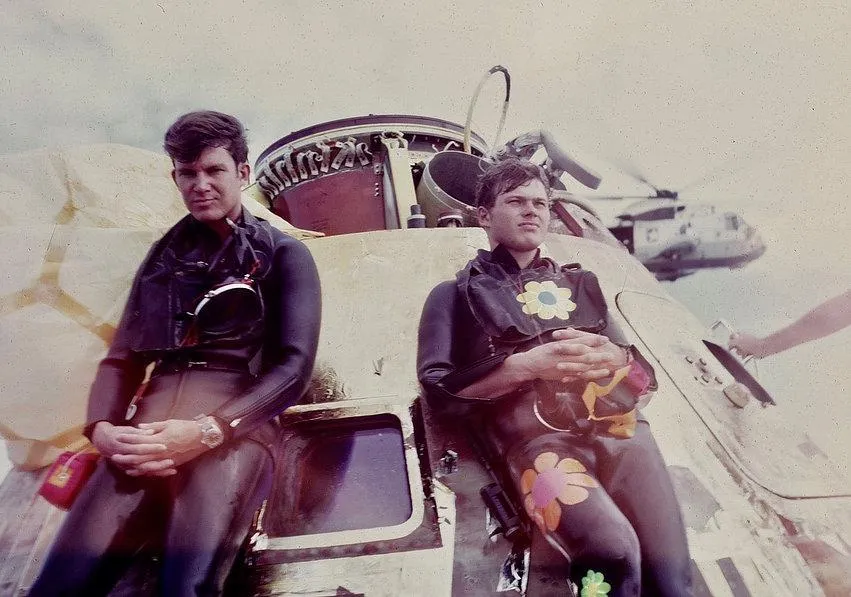
The first person to see the Apollo 11 astronauts after their Pacific splashdown—the first to welcome visitors back from another world—was 20-year-old Navy “frogman” John Wolfram of Fort Atkinson, Wisconsin.
He and his fellow members of SEAL Underwater Demolition Team 11—Wes Chesser and Michael Mallory—had trained for months for the ocean rescue, in which Sikorsky SH-3 Sea King helicopters deployed from the USS Hornet dropped off the swimmers to attach a sea anchor and flotation collar to the bobbing Apollo capsule. As the fastest swimmer on the team, Wolfram was first in the water, and the first to see Buzz Aldrin give a thumbs-up through the small hatch window.
Another SEAL, Clancy Hatleberg, dressed in a full-body decontamination suit, handed in three more suits through the hatch to the astronauts. Aldrin was the first to emerge, but the masks made his words unintelligible. “He shook my hand and stated something like, ‘Garble-garble-garble,’ ” Hatleberg told author Bob Fish. “As a good Navy-trained man who always repeats back an instruction...I actually said the words ‘garble’ back, not knowing what else to say.’ ”
After his service on Apollo, Wolfram returned to Vietnam for a second combat tour, receiving a Purple Heart for a leg wound suffered in a firefight. Today he is a Christian missionary.
Right hand
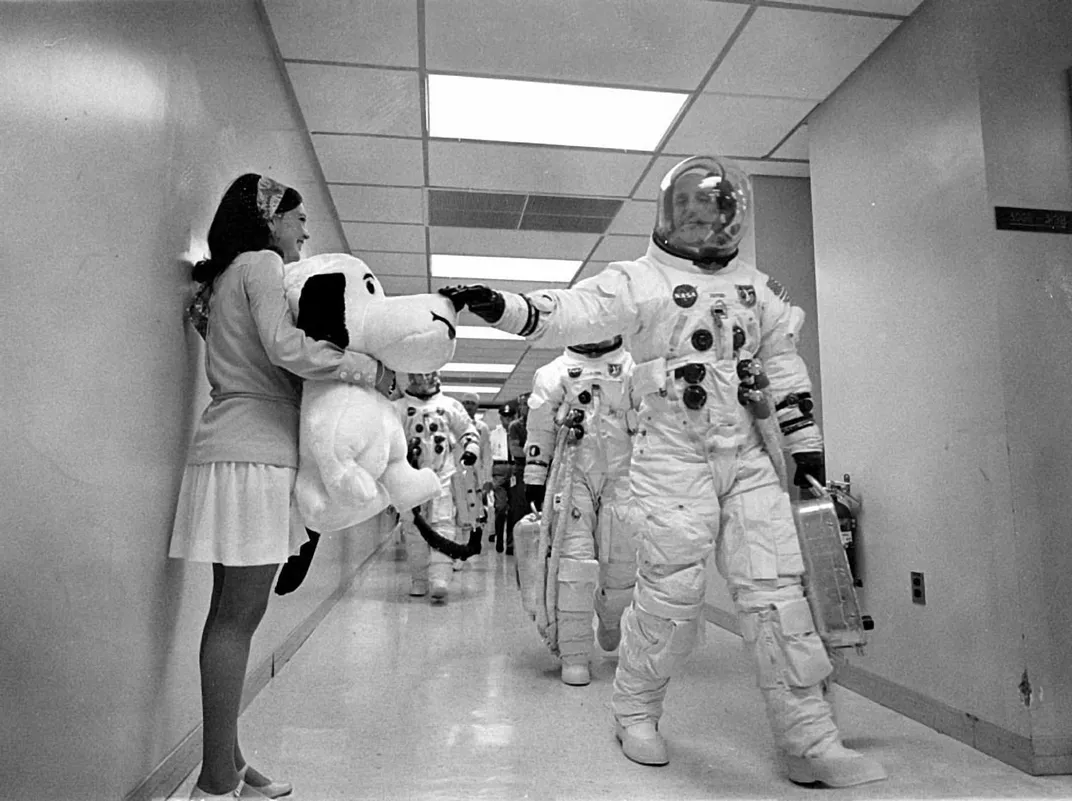
Jamye Flowers (later Coplin) was just 18 in June 1966, when she reported to work as a secretary in the astronaut office in Houston. “I graduated from high school one week, and I was standing in Alan Shepard’s office about seven days later,” she told an interviewer in 2008.
Apollo was an information-intensive business, and in the pre-computer age, secretaries were an essential part of the workforce. Some, like Gene Kranz’s secretary Lois Ransdell and Marilyn Bockting, who worked for Apollo spacecraft program manager George Low, were so well respected by their overwhelmingly male colleagues that they were singled out for awards (Ransdell was even made an honorary flight director).
As a secretary to the astronauts, Coplin wrote their frequent travel orders, ran interference when outsiders wanted access, traveled with them to the Cape for launches, kept their wives informed, and even babysat their children. When changes were made to the flight checklist, she had enough technical knowledge to see that they were made correctly. “It was time-consuming, because you had to be very careful to make sure you pulled the right pages,” she said. Like her bosses, she often took work home.
“We actually were a family within the astronaut office,” Coplin recalled. The night before a launch, with the Saturn V rocket lit up in the darkness, “We would try to make a good luck trip to get as close to the pad as we could, and just sit there and soak it all in and say a few little prayers for good flights.”
Route planner
John Houbolt’s greatest asset may have been his obstinacy. When it came to deciding the best way to reach the moon, he refused to take no for an answer.
The prevailing view in 1961 was to use a gigantic rocket, even larger than the still-to-be-invented Saturn V, to send a single vehicle directly from Earth to the lunar surface. There was another option, however, less thoroughly explored: Split up the spacecraft after arriving at the moon, with a command/service module remaining in lunar orbit, while a lander made the final descent. After their moonwalks, the astronauts would return to lunar orbit, dock with the command/service module, and head home. Although he didn’t invent Lunar Orbit Rendezvous, nobody believed in it quite as fervently as John Houbolt. “This is fantastic,” he recalled thinking after he crunched the numbers. “If there is one idea we must push, it is this one.”
In the face of resistance, Houbolt kept firing off memos to higher-ups, pressing LOR’s advantages in terms of cost and safety. In July 1962, the skeptics came around, and LOR became the official plan.
Rocket man
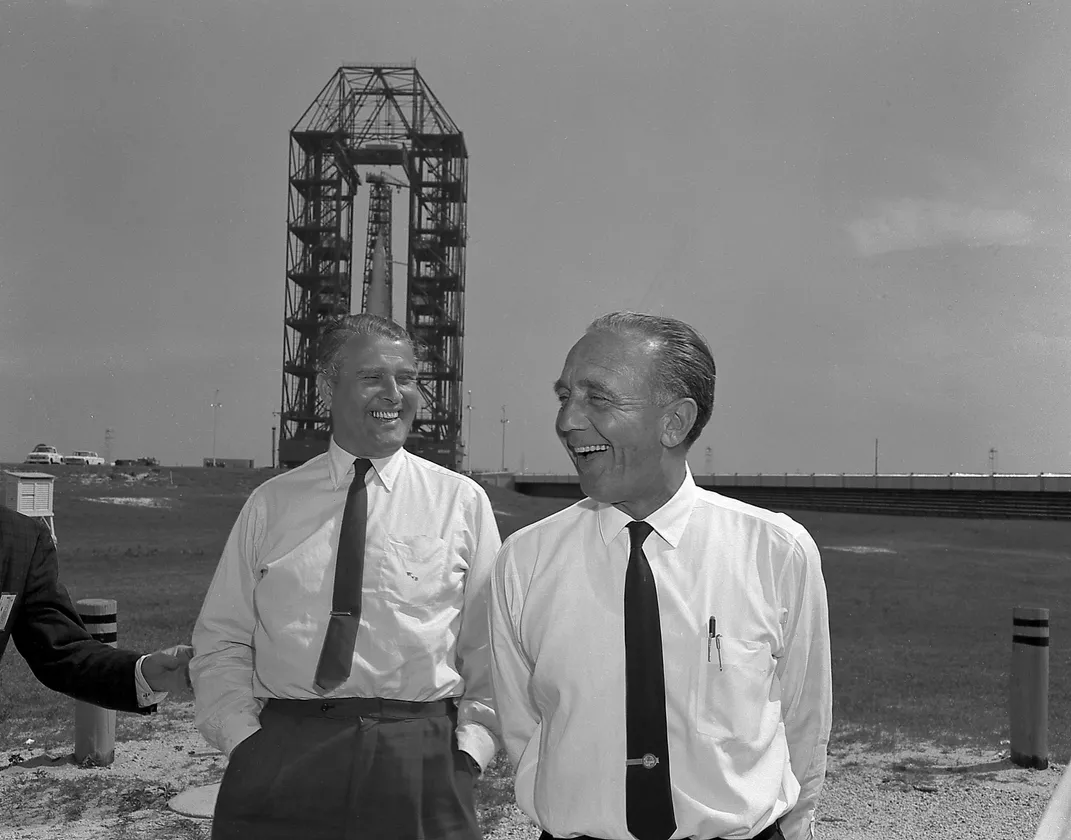
Norman Mailer described Kurt Debus as “a pleasant Junker gentleman with dueling scars on his mouth and bags under his eyes—the sort of aristocratic face...which belongs to an unhappy German prince from a small principality.” Born in Frankfurt in 1908, Debus was the colleague that Wernher von Braun, the visionary behind the Saturn V rocket, put in charge of the massive job of building NASA’s Florida moonport. Said von Braun, “We develop the rockets, and it’s up to Debus to see they do what they’re supposed to do.”
The two had been working together since 1939, testing and launching the Nazi regime’s military rockets from Peenemünde on the Baltic Coast. Together they surrendered to the U.S. Army at the end of World War II,
and together they helped incubate the U.S. rocket business from their new homes in Texas and Alabama. They launched the first U.S. satellite, Explorer 1, in 1958, and Alan Shepard’s Redstone in 1961. Von Braun and Debus are arguably the two most important rocketeers in NASA history.
Along with his right-hand man, an Italian-American former U.S. Army officer named Rocco Petrone, Debus supervised the construction of the launch pads and infrastructure at the Kennedy Space Center. He was confident, meticulous, and, like von Braun, he could think on a grand scale. One of his last jobs before his death in 1983 was overseeing construction of the space shuttle’s runway.
Field guide
Gene Shoemaker was the first—and is still the only—person to be buried on the moon. Some of the legendary geologist’s cremated remains were on the Lunar Prospector spacecraft deliberately crashed into the moon after its orbital scientific mission ended in 1999. According to Carolyn Porco, the scientist who arranged the tribute, Shoemaker said a year before his death in 1997, “Not going to the moon and banging on it with my own hammer has been the biggest disappointment in life.”
He made his scientific reputation in the late 1950s, when he proved conclusively that Meteor Crater in Arizona resulted from an asteroid impact. On loan from the U.S. Geological Survey to NASA in 1963, Shoemaker took the first astronauts to the crater to introduce them to the tools and methods of field geology.
After a diagnosis of Addison’s disease disqualified him from becoming an astronaut himself, Shoemaker found another way to contribute—by helping to train the Apollo crews, most of them test pilots, to do fieldwork on another world. Along with geologists like Lee Silver and Gordon Swann, he accompanied the astronauts on field trips to various lunar-like locations, mostly in the American West. Shoemaker remained a tireless advocate of the idea that people, once on the moon, should spend much of their time doing geology. Ultimately, though, he saw Apollo as a missed scientific opportunity, with the astronauts’ timelines so rigidly planned in advance that there wasn’t enough time for true exploration.
Back roomer
Behind every white-shirted, skinny-tied flight controller staring intently at a screen during the Apollo missions was a team of technical experts who knew the systems—guidance, propulsion, communications, and the like—as well or better than the controllers themselves. This supporting cast might run several people deep, even more in emergencies.
Never did the “back roomers” prove their value more than on Apollo 11, when computer alarms sounded inside the lunar module just as Armstrong and Aldrin were minutes from landing on the moon. Not recognizing the codes—1201 and 1202—the astronauts asked for Mission Control’s decision: Abort or keep going?
Because the alarm involved the onboard computer, Flight Director Gene Kranz asked his guidance officer, Steve Bales, for a call. Bales in turn consulted one of his back roomers, 24-year-old Jack Garman, who recognized 1202 as a memory overload, and not a serious problem if it didn’t keep recurring. “Go!” came his instant response to Bales. (According to historian David Mindell, another computer expert sitting with Garman, Russ Larson, was too engrossed to speak, but gave his own thumbs-up.) The astronauts were cleared to land.
Although he won a NASA award for his coolness under pressure, Garman gave credit to Kranz, who after the same alarm had cropped up in a simulation months earlier, had instructed his teams to memorize every possible alarm so they would know in advance how to respond.
Father figure
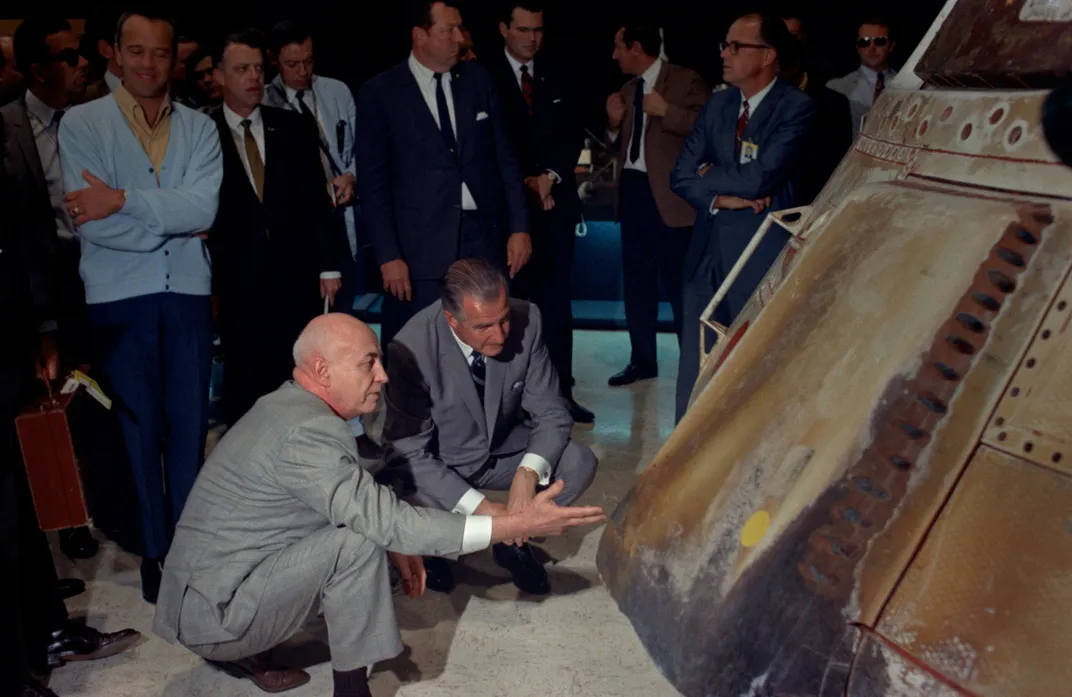
In the mid-1950s, before NASA even existed, the Langley Research Center in Virginia produced the engineers and scientists who invented American spaceflight. Chief among them was Minnesota-born Robert R. Gilruth, who became a kind of father figure to NASA’s Apollo work force (he was 55 at the time of the first moon landing). Known for his calm leadership and consensus-building management style, Gilruth moved his Space Task Group from Langley to Houston in 1962, and remained the head of NASA’s Manned Spacecraft Center for the next 10 years.
“There is no question that without Bob Gilruth, there would not have been a Mercury, a Gemini, or an Apollo program,” according to George Low, who headed NASA’s human spaceflight office at the time. Between them, Gilruth and Low deserve the most credit for planting the idea of a lunar landing in the mind of a young President Kennedy.
Gilruth recalled years later, “The president talked to me before he made his statement [committing the nation to Apollo]. I told him that I thought that maybe we could go to the moon, but I wasn’t sure that we could.... And he said well, let’s go ahead and say we can do it in a decade. And we will do the best we can.”
Despite his confidence in his team and their technical abilities, Gilruth would never shake the doubts entirely. After the first Apollo crews returned safely, he worried even more that NASA’s luck would eventually run out. “I know he died a thousand deaths every time one of those things launched,” recalled a colleague.
Engine tester
Lynn Radcliffe started at Grumman fresh out of college, just six months after Pearl Harbor. Early in his career he worked on the TBF Avenger torpedo bomber, and later on the first jets Grumman built for the Navy.
In 1962, Joe Gavin, Grumman’s manager for the Lunar Module that would transport astronauts on the last leg of their journey to the moon’s surface, tapped Radcliffe to lead the all-important engine testing for the module in White Sands, New Mexico. “I had absolutely no experience with rockets,” Radcliffe told filmmaker Mike Marcucci in 2005. “I was an absolute neophyte.”
The LM’s descent engine was throttleable—a first for the space program. Another, smaller engine powered the ascent stage that lifted the astronauts off the surface at the end of their stay. Due to the corrosive effect of its fuels, the complete ascent engine to be used in flight wasn’t test-fired ahead of time. “One of the things that put the most pressure on us was that we had to develop a perfect engine that was fired once, then discarded,” said Radcliffe.
He watched the Apollo 11 landing from home. It was, he told Marcucci, “a terrible 12 minutes of my life.... If I could have held my breath for 12 minutes, I probably would have done it.”
Watching the liftoff from the moon was even worse. This time he was at Grumman’s office in Bethpage, New York, with his colleagues, on whose workmanship Armstrong’s and Aldrin’s lives now depended. “Talk about a white-knuckle situation,” Radcliffe recalled. “There was no backup. Either it was going to work, or the astronauts were doomed.”
Bug squasher
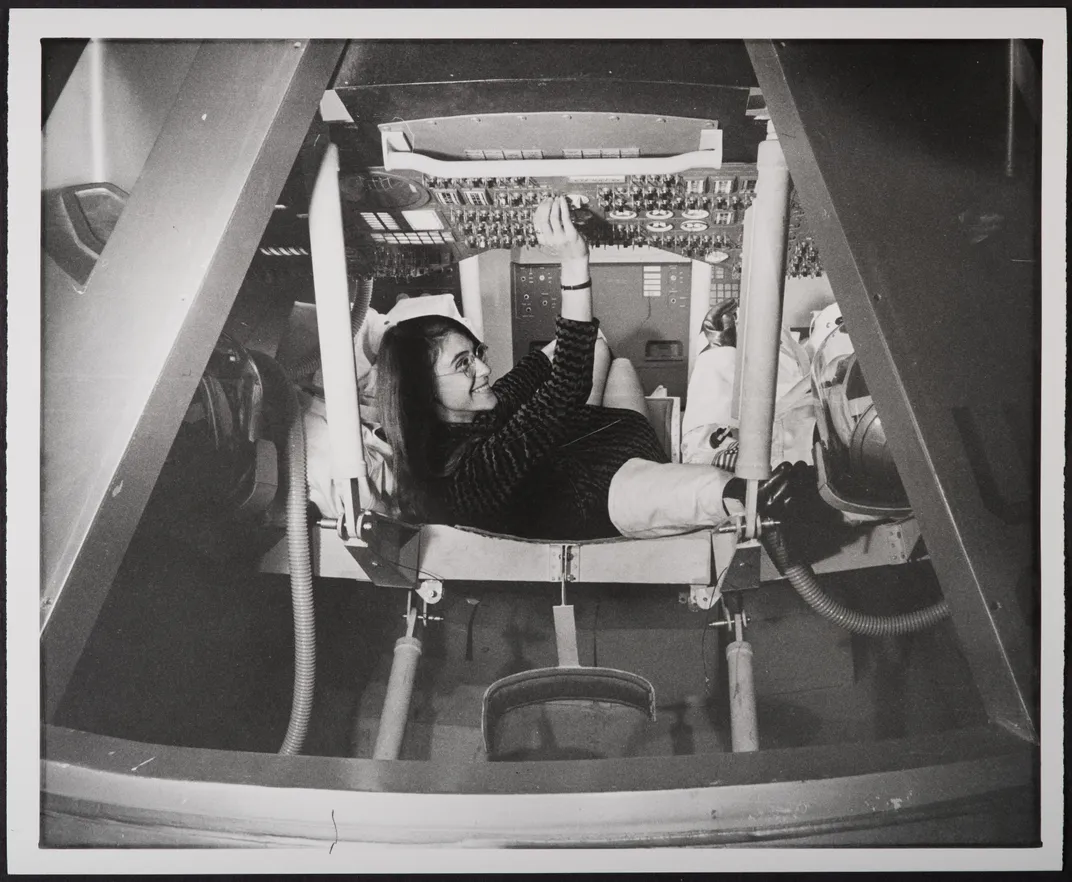
When she came to work at MIT’s Instrumentation Laboratory in the early 1960s, mathematician Margaret Hamilton was, by her own account, “a young kid...hired to do what they called programming.” Computers were still relatively new, and writing machine instructions, or “software,” was uncharted territory. Nor could Hamilton look to any female mentors at the lab, which had the NASA contract to write Apollo’s onboard software. “There weren’t for a long time any other women” on the project, she recalled.
Her own obsession was software reliability and error detection—rooting out all the bugs, human and machine, that might make the spacecraft computer fail. “Apollo gave us the opportunity to make every kind of error that one could ever imagine,” she said—even improbable ones like Jim Lovell accidentally entering the wrong command on Apollo 8 and resetting the computer to its prelaunch configuration when the astronauts were coming back from the moon. Hamilton helped save the day after that particular goof. By chance, her four-year-old daughter had done the same thing in a simulator, so her mother knew what to do when it happened during a real flight.
Hamilton eventually was put in charge of the several hundred oddballs and geniuses at MIT who wrote the software for the Apollo Command Module and Lunar Module. The group included other “young kids” like Alan Klumpp and Don Eyles, who wrote the code for the most harrowing minutes of the mission, the lunar module’s descent to the surface. It all worked exactly as designed. “Were we lucky or were we good?” wrote Eyles in a 2018 memoir. “Both I think.”
Car designer
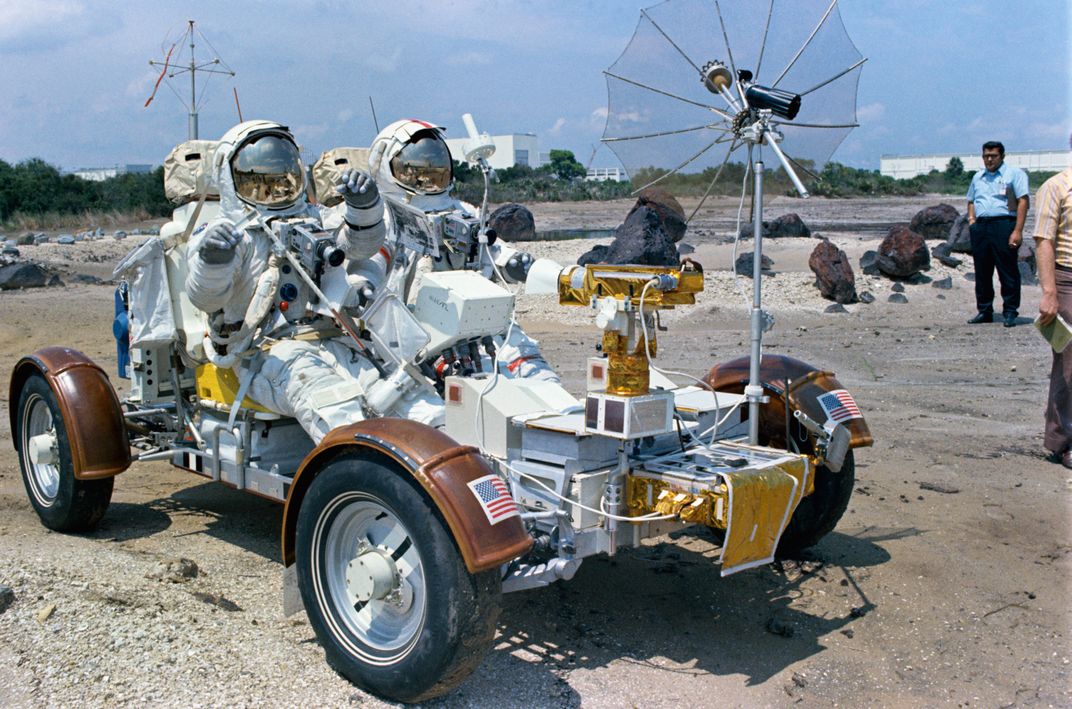
In November 1956, Ferenc Pavlics and his wife escaped Hungary following the aborted uprising against the Soviet-backed government. They had spent just a few days in a refugee camp in the United States when an engineer from General Motors—himself a Polish immigrant—came through the camp looking for people with engineering backgrounds. Pavlics was hired on the spot. Soon he was living in Santa Barbara, California, as a GM engineer, designing off-road vehicles the company hoped to sell to military and agricultural customers.
In the mid-1960s, when NASA went looking for concepts for a vehicle that astronauts could drive around on the moon’s surface, U.S. car manufacturers responded enthusiastically—none more so than GM. After a multi-ton lunar vehicle was rejected as too heavy, the designers were presented with a new, more difficult challenge: Invent something that could be tucked in a small compartment, about the size of a car trunk, beneath the lunar module’s hatch.
Pavlics went home, and with the help of his family built a scale model of an open, jeep-like lunar rover. His wife made the seats, and his son supplied a G.I. Joe to sit in as the astronaut driver. Pavlics came up with a way to fold up the rover, including its special piano-wire wheels for rolling through lunar dust, so that it would fit the tiny space. His rovers accompanied astronauts on the final three Apollo missions, making it possible to shift Apollo science from short walks near the lander to true geological exploration.
Geology teacher
In early 1967, Egyptian-born, U.S.-educated geologist Farouk El-Baz was looking for a job, preferably at a university where he could use his recent Ph.D. He answered an ad in a professional journal: “We need geologists to work on the moon.” When his wife asked, “What do you know about the moon?” he replied, “Nothing, but I can learn.”
Before long he was on the scientific team that had the important job of choosing the landing sites for the Apollo missions. While other geologists trained the moonwalkers to recognize the different kinds of rock they might encounter on the surface, El-Baz was among those who coached the command module pilots—who spent many hours alone, observing the moon from lunar orbit—in what they would see out the window. He became “one of the crew members’ most trusted teachers,” according to Apollo scientist and geology trainer Bill Phinney.
Later, as a research scientist at the National Air and Space Museum, El-Baz made another, less well-known contribution. Inspired by a pilgrimage he had made as a boy to Mecca, where he touched a black stone said to be sent down from heaven by Allah, he came up with the idea to have a touchable moon rock on display at the Museum, so the public could share in the wonder of Apollo.
Tailor
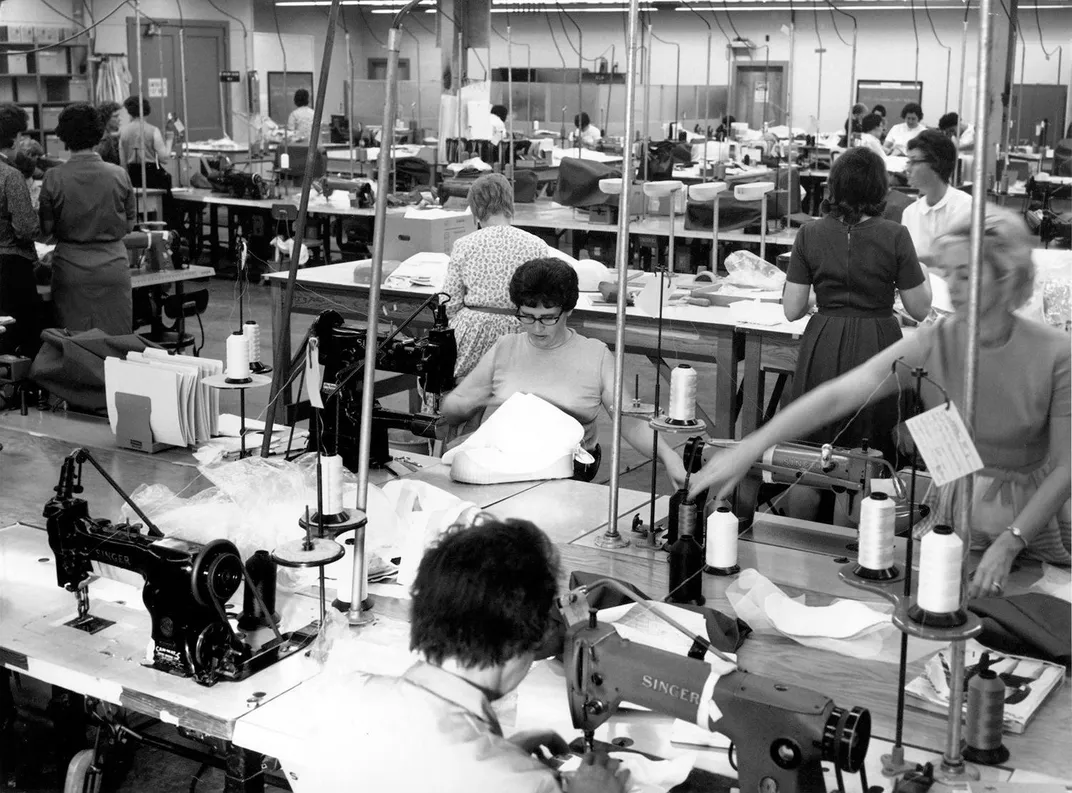
The job of manufacturing the astronauts’ moon suits went to the International Latex Corporation of Delaware, better known for making Playtex bras. “Each Apollo spacesuit was constructed by hand with sewing machines, single needles, glue and heat-sealing tools,” wrote historian Douglas Lantry. “And women built them all.”
On open shop floors, dozens of skilled seamstresses worked brutal hours on the most exacting of tasks. Eleanor “Ellie” Foraker, one of the group leaders, was in her 30s at the time. “I was sewing baby pants, and then an engineer came to me and asked me if I would mind trying something else,” she recalled in the documentary Moon Machines. “I never thought in my wildest dreams that I would be making spacesuits.”
Some stitches had to be precise to within a 64th of an inch. The suit’s more exotic materials could be worked only once, with no chance to re-sew. According to author Nicholas de Monchaux, “Striving to meet deadline after deadline, Foraker would often be sewing late into the night.”
Astronauts sometimes stopped by the ILC factory in Frederica, Delaware—as if the seamstresses needed reminding that the lives of national heroes were at stake. On one such visit, James Lovell left a note: “To the Girls of Frederica—Thank you for sewing straight and careful. I would hate to have a tear in my pants on the moon.”
Brain maker
On the eve of the Apollo 11 launch in July 1969, NASA director of flight operations Christopher Kraft wrote in the New York Times, “If I had to single out the single piece of equipment that, more than any other, has allowed us to go from Earth-orbit Mercury flights to Apollo lunar trips in just over seven years, it would be the high-speed computer.”
Apollo’s onboard brain, a rectangular unit about the size of a toaster oven, was installed in both the Command Module and Lunar Module. Called the Apollo Guidance Computer, it handled the spacecraft’s navigation, positioning, and complicated steering. The computer was designed at MIT, with Eldon C. Hall as the project lead. Raised on a farm in eastern Oregon, he had joined the Instrumentation Laboratory in 1952, and had worked on the inertial guidance system for the Navy’s Polaris missile. Because it was launched from submarines, the Polaris system had to pack a lot of capability into a small space. Working on it was ideal experience for Apollo.
At Hall’s instigation, MIT made the risky decision to use silicon-integrated circuits for the Apollo computer, even though their reliability was in question. As he wrote later, “I became the salesman to convince everybody, including NASA program management” that the new technology could be trusted. So many integrated circuits were needed in order to satisfy Apollo’s strict standards for acceptance that the moonshot gave an important boost to the fledgling U.S. computer industry.
Crew boss
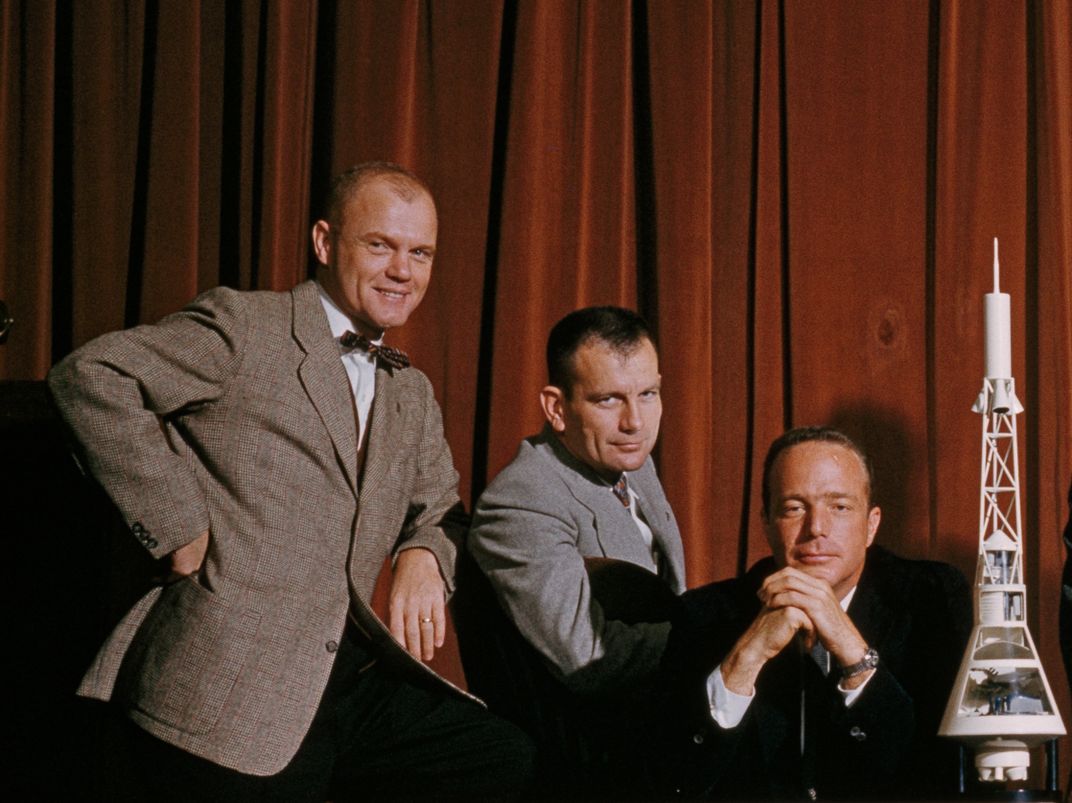
He never got to the moon himself. Not because he wasn’t worthy, but because, before even getting a chance at a Mercury flight, NASA doctors sidelined him for a minor heart condition. Or, in his telling, he “got screwed out of a mission for medical reasons.” So Deke Slayton, one of America’s original astronauts, took another job. As head of flight crew operations, he became the astronauts’ boss during the Apollo era.
He picked the commanders for all the lunar landing missions, including Neil Armstrong (whose civilian status was never a factor, Slayton maintained), and with the commanders’ input, he chose the rest of the crews. To do that he had to match skills and personalities with a particular mission’s needs, like a coach choosing the best lineup, while also considering whose turn it was in the rotation. The selection process may have been a mystery to the astronauts, but by and large they considered it fair.
Slayton devised a system whereby each astronaut became expert on a different technical aspect of Apollo—on the theory that the project was far too large for a single individual to comprehend fully. He saw his best friend Gus Grissom die in the Apollo 1 fire (Grissom would likely have been first to walk on the moon had he lived, according to Slayton), and he sent each Apollo crew off to the moon personally by riding with them in the van to the launch pad.
Slayton finally made it to space in 1975, three years after the last lunar landing, on the joint Apollo-Soyuz Test Project with the Soviets.
Synthesizer
A veteran of the pre-NASA space program, Howard W. “Bill” Tindall Jr. started at the Langley Research Center in 1948, where he worked on projects like the ECHO communications balloon before transferring to human spaceflight. His job on Apollo, by his own description, was “mission techniques, which is basically trying to figure out how we were going to fly the mission.”
It sounds simple, but it required wrapping his brain around a fantastically complicated system with thousands of interrelated parts. Nobody did that better than Tindall. In the late 1960s, with the Apollo program in full swing, he presided over regular meetings, often contentious, where engineers from different divisions would hash out their technical issues and probe for soft spots. A master synthesizer, Tindall would sum up these sessions in memoranda that became famous as “Tindallgrams,” known for their colorful style as much as their spot-on analysis. Recalled astronaut Ken Mattingly, “I mean, people waited for the next Tindallgram. That was like waiting for the newspaper in the morning.”
Tindall’s astute, big-picture vision earned him the ultimate respect of his peers. Said Chief Flight Director Gene Kranz: “If there [had] been a lunar plaque left on the moon from somebody in Mission Control or Flight Control, it should have been for Bill Tindall. Tindall was the guy who put all the pieces together, and all we did is execute them.”
Experimenter
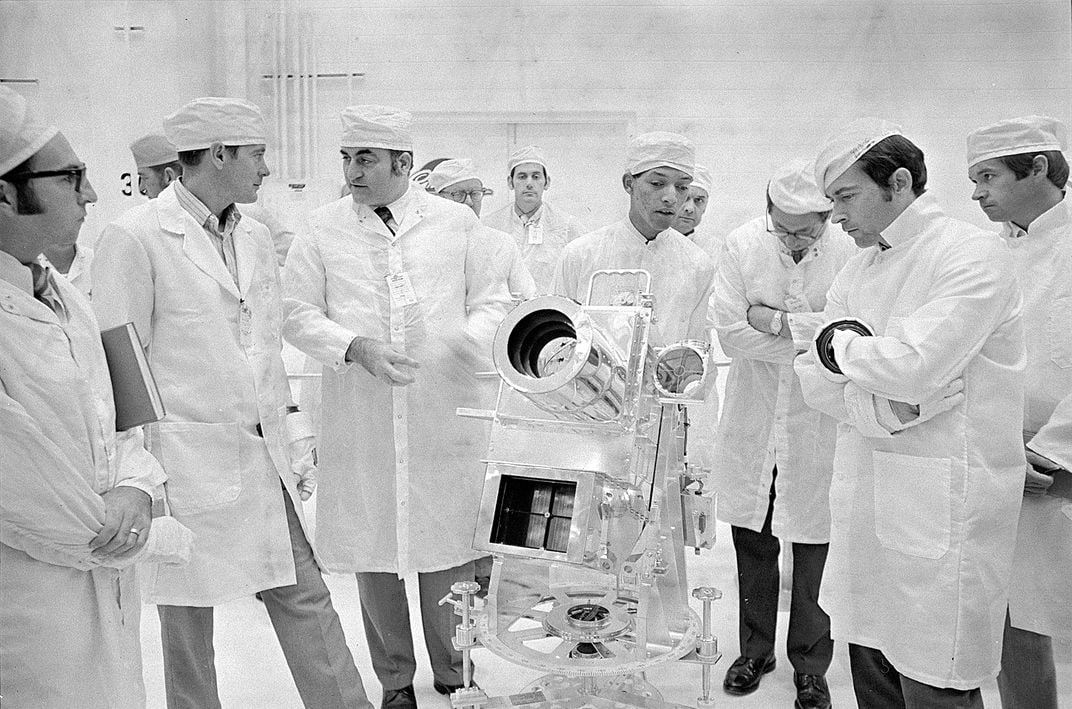
As a boy in rural Illinois and later Chicago, George Carruthers grew up reading science fiction and Wernher von Braun’s popular articles about the coming Space Age. By the time he entered the University of Illinois, a month before Sputnik launched, he was aware that scientists had long considered the moon an ideal platform for astronomy, with no atmosphere to cloud the view.
When, in 1969, NASA put out a call for scientists to propose scientific instruments for the later Apollo missions, 30-year-old Carruthers and his colleague at the Naval Research Laboratory, Thornton Page, proposed their Far Ultraviolet Camera/Spectrograph. Three years later, on Apollo 16, John Young set up their portable telescope—the first placed on another world—next to the Lunar Module Orion, which had just touched down in the Descartes highlands. An engineer as well as a scientist, Carruthers was a rarity, an African-American in a mostly white profession. He went on to design another telescope for the Skylab space station of the 1970s, and was awarded the National Medal of Technology and Innovation in 2012.
Lunar navigator
On the day before Neil Armstrong retired from NASA in 1971, journalist Robert Sherrod asked him who on the Apollo team stood out in the astronaut’s mind in terms of talent and ability. Armstrong “grinned and said, ‘Emil Schiesser! I’d vote for Emil every time.’ ”
A mathematician described by another colleague as “slender, ascetic, intense, articulate,” Schiesser worked in the orbit determination section that plotted the path of the Apollo spacecraft as it orbited and descended to the moon’s surface. He and his fellow navigation experts had to determine, for example, exactly how low the Command Module could orbit without slamming into a lunar mountain range. To do that, they had to factor in gravitational irregularities caused by mass concentrations, or “mascons,” in the lunar crust, which could pull the spacecraft off track. “If Emil said mascons were there,” Armstrong told Sherrod, “we had mascons there.”
Pinpoint landing was a major challenge. When NASA decided that Apollo 12 astronauts Pete Conrad and Alan Bean should try to land near the Surveyor 3 robot that had been sitting on the lunar surface for two years, the first estimate was that they could come within a mile (Apollo 11 had overshot its target by four miles). But thanks to Schiesser, who suggested a way to track and adjust the final landing path more precisely based on changes in the spacecraft’s radio signal, Conrad and Bean touched down within 170 yards, close enough to walk to the Surveyor.
Dietitian
Her official title was subsystems manager for the Apollo food and personal hygiene items, but newspapers sometimes referred to Rita Rapp as the Apollo “dietitian.” It was a lot more than just packing the astronauts’ lunches.
Early in her NASA career she had helped develop biomedical instrumentation for the Mercury program, then turned to nutrition and food packaging. Like everything else to do with Apollo, the job involved science with a large dose of engineering. Astronaut cuisine up until Apollo 13 was mostly freeze-dried, but Rapp and her staff tried to introduce new and better items on every flight (scrambled eggs were added on Apollo 12, along with beef and gravy). She worked closely with the astronauts, tried to honor special requests (grits for Apollo 16’s Charlie Duke), and even baked cookies for the crews before launches.
:focal(2531x2240:2532x2241)/https://tf-cmsv2-smithsonianmag-media.s3.amazonaws.com/filer/c2/34/c234751f-d2d6-415e-b3f4-c73521adfe68/07s_ce14_apollo2019_nasa-72-h-1374_live.jpg)